On Safari
A year ago my mother declared that she intended to spend my inheritance by
taking the entire family to Africa. Ok, she didn't quite say it that way because
sadly she doesn't think of her bank account as my inheritance. The trip required
huge levels of study, planning and preparation, not to mention cash. The result
a year later was a once in a lifetime experience for all.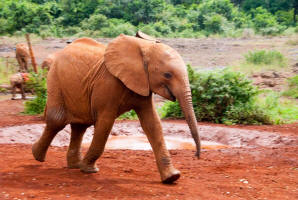
Much of the preparation was stressful. Doctors were seemingly inventing long-forgotten diseases to immunize us against. The Kenyan embassy produced a two yard long document of requirements to obtain a single access visa. The couldn't spell my name right even after multiple corrections. The spraying of our clothes with insect repellent was not fun at all. But nothing matched the stress of trying to pack for two weeks worth of clothing into a 33 pound per person limit.
The trip really began a week before the departure date when I took my first malaria pill. The warning label said that the pills could create "vivid" dreams and boy were they right. I recommend these pills to anyone who loves tripping on a vivid dream!
We traveled to Amsterdam as a warm up and met up with mom and brother Ken's family for a day and a half of museums and exploring.
I renewed my relationship with Rembrandt, affirmed my belief that Van Gogh is overrated and re-centered myself inside of Anne Frank's house, but the primary fascination point was the city's fascination with bicycles. Every railing seemingly had a bike attached to it. Is this the greenest city on earth? Possibly but then I started to wonder if someone used all these bikes we saw. In fact more than a few look rusted or had weeds enveloping its wheels. What happens if someone dies having left a bicycle chained and locked to one of Amsterdam's many canal bridges? Does it stay there in perpetuity? How is this managed? Alas, I would get no answers to my questions cycling questions.
With impressionable youths on the trip we didn't spend too much time in the Red
Light District, but frankly we wouldn't be modern parents if we didn't give them
at least a taste of what Amsterdam is most famous for. We chose an early morning
walk through the district of sin. It was drizzling and our group had strung out
in a long line of walkers with no exact destination.
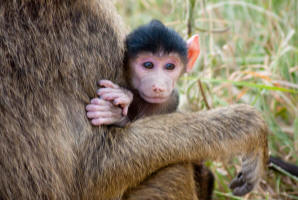 I
was on point and I turned a corner and my eyes were burned by an overly busty
painted woman standing in a glass door way. Her nipples were exposed and she was
possibly the most horribly ugly woman I have ever laid eyes upon. I took two
additional steps, stopped, turned and waited for Kevin to make the same turn
around the corner. The expression on his face was priceless as he slowly
registered exactly what his eyes were seeing. The look of horror on his face was
priceless...if only I had snapped a photo!
I
was on point and I turned a corner and my eyes were burned by an overly busty
painted woman standing in a glass door way. Her nipples were exposed and she was
possibly the most horribly ugly woman I have ever laid eyes upon. I took two
additional steps, stopped, turned and waited for Kevin to make the same turn
around the corner. The expression on his face was priceless as he slowly
registered exactly what his eyes were seeing. The look of horror on his face was
priceless...if only I had snapped a photo!
Snapping photos was not a problem. In 14 days I snapped 4800 photos. I was able to edit those down to a mere 855 keepers in the weeks following the trip.
As a group of 9 we did an excellent job of instantly adjusting to the time change. I bullied the group into following my four golden rules for avoiding jet lag. 1) Sleep as much as you like on the plane. 2) Eat when the clock in the new time zone says it's meal time (and eat often). 3) No napping at any time and ideally one should keep walking. 4) No sleeping before the country's 90-year olds start to nod off for the night. We made it until about 6:45pm that first night and were good to go the next morning. Kevin reported, however, falling asleep while standing in front of a Van Gogh painting. I'm not sure if that was the jet lag or the subject.
I started to wonder why we were schlepping all the way to Africa because a European vacation was sounding far more civilized. I would have been happy staying Amsterdam and simply eating the hotel's included breakfast every day for two weeks. Alas adventure was in our future.
Saturday's 11-hour flight to Amsterdam was followed by Monday's 8-hour flight to
Nairobi, Kenya. We weren't more than three steps off the plane in Africa before
we realized we were in a third world country. A group of young American
missionaries were seated on the floor of the airport being lectured on how
dangerous this country is...and he was only talking about drinking the water! No
drinking, no vegetables that might be washed in it, and no brushing your teeth
with the tap water!
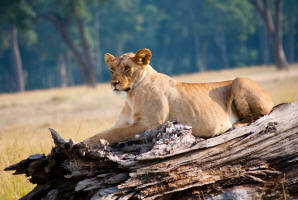
The lines for passport control were long and disorganized. We waited in one and got very close to the front when an official approached us and asked us to go around the corner to wait in a new line. We assumed that this second line would be shorter, but instead it was longer than the first one we stood in! When we finally made it to the front I was fascinated that this third world country had better technology than the U.S. We were photographed and electronically finger printed…all ten fingers! And yet after reading all the many warnings about having the appropriate immunizations no one paid our health any attention at all.
Once we formally entered the country, we were quickly corralled by our guides and shuttled onto our own bus. In fact standing at the airport was the last time we would wander freely the entire time we were in the country. We were taken to what must have be considered the "Beverly Hills of Nairobi" staying in a hotel that had both armed guards and an electrified fence.
We really didn't get a sense for why there was so much security until we left Nairobi and saw a sprawling slum that housed over 700,000 people in corrugated metal houses.
In Nairobi we had a busy day:
A visit to Nairobi's elephant orphanage.
We smooched with the giraffes.
We got tours of a metal works and bead factory.
And we ended the day at Nairobi's best known white woman, Karen Blixen's house.
But Nairobi for us was not much more than a day trip. We were going on safari!
Safari means journey and the process of traveling was a major component of the trip. We became expert at flying in tiny 12-seater planes that moved us to and from the three parks we visited. There was a touch of concern that no tickets were ever issued, virtually no security screening conducted and in some cases no asphalt on the runway (let alone buildings at the airport). And yet ultimately everything worked smoothly.
The safari began as we landed in Amboselli National Park. At the foot of a snow-capped Mount Kilimanjaro, this was the African equivalent of a trout farm. Despite its seemingly endless size, it was teeming with animals. As we descended into the park we spotted a Wildebeest from the plane window. Seeing our first animal in the wild, even before touch down, was very exciting. Once we hooked up with our guides we were eager to find our lone wildebeest. We found him as we exited the airport (more appropriately called a "landing strip"). We could only get as close as 200 yards but it was very exciting. I started snapping photos and before long I had a dozen photos. These would end up being the worst photos of the trip. We would go on to see herds of wildebeests, get just feet away not to mention finding much better looking animals. And yet there's nothing like hunting down your first wild animal.
Our guide, Kenneth, was extremely patient. He could have simply pointed out that there were amazing sites to see and we were wasting our time with a distant wildebeest. I think he realized that part of the excitement is slowly discovering just how much there is to see. The rest of the day (and week) became a regular trumping of the best shot of the vacation to date.
With every new mile we logged, we discovered new visual treasures. If you had told me on that first day that I would grow bored of the "easy to photograph" animals, I wouldn't have believed you. But there did come a time when the focus shifted to finding the more stealthy game.
Throughout our journey we stayed in tents. To be sure these were first class
tents, but tents nevertheless. We had 9 days of living without walls, windows or
fences protecting our rooms, vehicles or environment. The camps were guarded by
an army of stick and gun wielding men who constantly looked fearful about what
might walk into camp. It was clear we were living in the wild with monkeys on
the roof, elephants eating below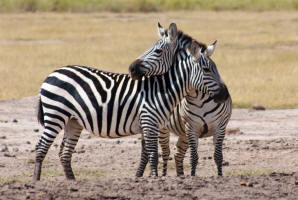 our porch and on one night a hippo fight between two tents.
our porch and on one night a hippo fight between two tents.
Our days typically began at or near dawn, included an afternoon rest with a second safari beginning in the late afternoon. We traveled to Samburu and later to the Masai Mara and all told spent about 50 hours on Safari. Despite being within 100 miles of the equator we experienced some very cold mornings staying at elevations approaching 5,000 feet.
While finding big game was easy at our first stop, the challenge of finding the perfect shot grew with every day of the trip. Samburu and Masai Mara both required more hunting. There were certainly times when a couple of hours went by of driving around looking for something...anything. The trip was at times exhausting but the chase only added to the thrill of catching a great picture.
We quickly learned about an African massage. This is a free service provided to all on safari that one gets just by sitting in the car. We quickly became experts at driving on unpaved roads, but I don't think it's possible for me to adequately describe just how bad some of these roads are. We joked that while Africa regularly gets the benefit of Doctors without Borders, they need a similar service from a group called Pavers without Borders for their roads!
Not all travel was bouncy. One morning we rose at 4:30am to take an amazing hot air balloon as the sun rose. The balloon never got much above the treetops giving us a bird's eye view of game. Interestingly the security we went through to get on the balloon was significantly more extensive than the non-existent security for the half dozen flights we took in airplanes.
Here are some more stories from my traveler's notebook:
We visited a Samburu tribe and met Chief Steven. He was a very funny guy and proudly told us he was a consultant to the Survivor Africa TV series. That certainly elevated his status in the eyes of some.
The Samburu
warriors taught Kevin how to make fire. Using cow dung as an accelerant and
two sticks he was able to produce a flame from scratch. Why is it that they
can never seem to do it on Survivor?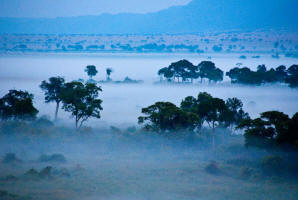
The Samburu women greeted us with song and dance and enlisted the women amongst us to join them. The single males were invited to demonstrate their jumping ability along with the Samburu warriors. Our own Scott impressed many with his vertical leap.
Brother Ken demonstrated to the Samburu kids how with three rocks anyone can juggle. He had them enthralled until Chief Steven decided he had had enough of us.
There is nothing like arriving at an airport and seeing nothing there once the plane promptly leaves. No buildings, no people, no asphalt. On the final day our plane was 45 minutes late to pick us up. We looked up to the sky hoping our plane would arrive. When we did hear the faint roar of the propeller I was excited to shout, "Da Plane, Da Plane."
We saw an ostrich family with a proud father out front, a proud mamma in the rear and 18 little chicks in between. No one should ever have to deal with 18 offspring!
Watching the elephant social system was fascinating. We carefully placed our car in the line where a family of about 30 elephants would cross the road. The family walked in a single file line until they got to the road before they surrounded their young. They looked like a well polished Secret Service team. Two "agents" stood on the road while an inner circle of agents surrounded the young. Is this where the Secret Service learned the technique?
My mother learned that in Swahili "polé-polé" means "slowly" and she dubbed herself the "polé-polé mamma" as she climbed into the hot air balloon baskets, or into a tippy boat, or climbed up into a jeep she was proud of her slow yet safe movements.
We had been looking for a cheetah for days and on the second to last day we hit the mother load…a cheetah with two babies. The mom was slowly swinging her tail from side to side to keep the bugs away while the two babies were trying to catch the tale as if it was a new toy. I was laughing so hard I couldn't hold the camera steady.
We found a lion
kill early in the trip and this would certainly be one of the trip's
highlights. The lions captured a lone wildebeest in the night and when we
arrived the females were finishing breakfast while hyenas patiently waited
their turn. Once the lions finished the hyenas moved in and the circling
vultures landed to wait their turn. Before the vultures were allowed in, the
jackals arrived. We spent over an hour and half watching the whole cycle
play out and we would have been happy to watch for another hour.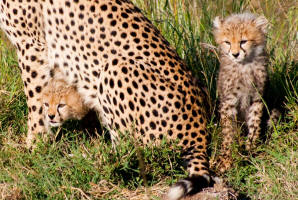
In one camp we stayed on a river. The river was chocolaty brown. With visions of Willy Wanka, we sadly struggled to find any chocolate at all on the trip.
Living in a tent has some challenges and some advantages. Most camps did not have the electricity on the entire day and there was a lack of basic privacy, but there is nothing like lying in bed at night listening to the full African orchestra of sounds. It was an audio bonanza.
We asked one guide if we might find a lion den only to learn there is no such thing as a Lion's den. Lions don't have dens. In fact lions are constantly roaming. Hyenas are the ones that have dens.
A big aspect of the trip's success was the quality of the guides. They had to be expert drivers, crossing rivers, managing mud and challenges with no Auto Club standing by with a tow. And yet they were also our major window into life in Africa. Two seemed highly educated having attended university and studied gaming and tourism. This level of professionalism added considerably. A third guide was a 30-year veteran who may have lacked formal schooling, but his experience was unlike the other two. He demonstrated that finding the animals is certainly an art.
It was not nearly as crowded with tourists as I would have thought. Yes, we saw other tourists but it was always a small number. Maybe the $80 per person per day park fees were enough to scare off most.
As rough as some of the roads were, we frequently would stop for tea. Very civilized on the road.
There are few words to describe how visually stimulating the entire experience was. Maybe you'll get a sense for this by looking at the photos.
Our final memory of Kenya came in the Air Kenya airplane as we waited to depart for Paris. Flight attendants armed themselves with two bug spray aerosol cans each and proceeded to spray the entire airplane without warning. This must be the same stuff we use to bug spray our house where the warning label says we are supposed to leave the house!
Since returning the most common question I get is, "what kind of camera gear do you have," to which the answer is, "not the most expensive." These shots have everything to do with being extremely close with great light.
Greg
July 2012
© Greg Harris, 2012
All Rights Reserved